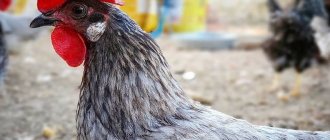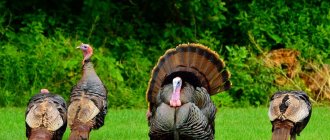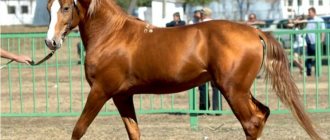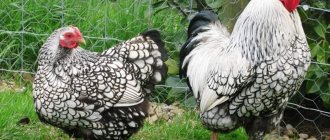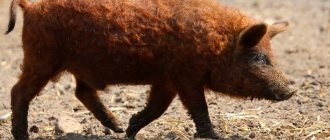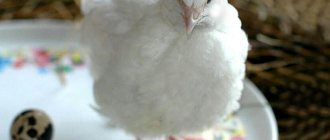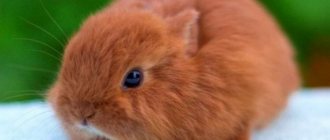Australia has always been known first of all as a large producer of agricultural products, and only then as an industrialized state. One of the most important achievements of Australian breeders at one time was the breed of Black Australorp chickens. Australorps have a typical exterior for meat and egg chickens: medium-sized... And although it is very popular only in Australia itself and even in the USA, every serious farmer should know what this breed is.
History of the breed
Homeland - Australia, 1890. The main breeder is William Cook. Ancestors: white Leghorns, English Orpingtons and Langshanans. Thanks to the crossing of strong breeds, Australorps can boast of high egg production, considerable weight and rapid sexual maturation.
The bred black Australorp was extremely popular among poultry farmers at home and in America; in other countries there was much less interest. The situation changed greatly in 1922 - the year the world record for egg production was set. 6 hens of the Australorp breed laid 1857 eggs in 1 year, respectively, 1 hen laid about 309 eggs. Some poultry farmers believe that this indicator was established without additional lighting devices and special feed.
Birds of this breed were brought to the territory of the Russian Federation in 1946.
Photo gallery
Photo 1. Hybrid variegated Australorps
Photo 2. Australorp resting in the kitchen Photo 3. Australorp in the house
Photo 4. Australorp in the room Photo 5. Chicken Australorp in the snow
Photo 6. Australorps in cages
Description of Australorp chickens
The standard is very strict; any even minor violation in appearance classifies individuals as not purebred. Laying hens are not particularly large, however, they are well built and are considered excellent hens.
Characteristic signs of a rooster:
- small head;
- straight comb with straight teeth;
- massive chest;
- non-bulging belly;
- large-scale wings;
- legs black, short;
- wide tail;
- black eyes;
- skin white.
Based on the characteristic features of the birds, the pedigree of the young can be determined. When chicks are born, the chicks have gray spots on their bellies and wings. This is one of the main indicators of purebredness, but not the only one. Birds develop their external characteristics over time. Babies should have white fluff, light-colored metatarsals and irises. Over time, all light shades turn black.
Character of the Astralorps
Representatives of this breed are peaceful, friendly and quiet. They do not participate in fights and avoid showdowns. Australorp hens will not “talk” just like that, without a reason. They do not fly anywhere, behave appropriately and do not misbehave.
Males are calm and phlegmatic, they maintain order and can find contact with each other. When breeding birds of this breed on your own property, the chickens will not cause harm, they will obey the poultry farmer and remain quiet.
Hatching instinct
Experienced breeders claim that Australorp hens are the best mothers of all other varieties of chickens. For this, nature rewarded the birds with high egg production. Almost every female becomes a mother twice in one season and hatches about 15 chicks.
The hatchability of offspring is more than 95%, but if the percentage drops significantly, then the reason most often lies in the rooster. The “father” of the young should be a male no older than 5 years old, not very large and heavy.
Hatchability is also affected by heat and cold. Breeders are confident that the birds in the nests need additional heating, thanks to this the survival rate will be higher, but the offspring will not be the healthiest.
general information
History of breeding
The exact place where the breed was bred has not yet been established. According to one version, the Americans brought Plymouth rock chickens to Germany. On the basis of this breed, German breeders created the meat and egg variety of Amrox chickens. The main task was to breed birds of high productivity, not demanding in terms of maintenance and characterized by good health.
For several decades, scientists have been breeding ptimutrocks, but have not crossed them with birds of other varieties. Intrabreed selection was used, which over time led to changes in appearance and productivity. In the mid-20th century, the differences became noticeable and it was decided to register a new breed.
There is another version according to which breeders from America were involved in breeding Amroks. They also used the Plymouth rock breed. It was only in the 20th century that Amroks were brought to Germany.
Description of appearance
The main difference between Amrox chickens and representatives of other chicken varieties is their cuckoo plumage. Black and gray feathers alternate throughout the body, giving the bird a solemn appearance. The hen has a richer color than the rooster.
Amroks have a massive elongated body, a wide chest and heavy bones. The plumage is of medium length, and underneath there is a thick layer of fluff, so the chicken seems very powerful.
On the medium-sized head there is a leaf-shaped fleshy crest of scarlet color. The eyes are brown, the paws are deep yellow, without feathers. The pride of the Amroks is their bushy tail. In roosters it is raised up and consists of long, wide feathers.
If there are no black stripes at the ends of the feathers, the bird is defective. Also, genetic disorders are indicated by a narrow back, too long beak, sharp claws and a poorly developed abdomen.
There is a dwarf variety of amrox. Outwardly, they are absolutely the same as their larger counterparts. The main difference is weight.
The difference between a chicken and a rooster
The sex of Amroks is easy to determine by color. In quoits it is darker because they have wide black stripes on their feathers. The rooster alternates dark and light colors evenly.
Differences in color appear already in day-old chicks. A young chicken has a white spot on its head. Therefore, when buying birds, there will be no problems with gender.
Features of preparation for the exhibition
Thanks to their luxurious color, Amrox chickens can participate in the exhibition. But, if the bird is bred for decorative purposes, you will have to carefully monitor it.
Before the exhibition, chickens should not walk for a long time under the scorching sun. Otherwise, the feathers will acquire a yellow tint, and some of them will fade. In this case, the bird is not allowed for exhibition and is not used for breeding.
Kinds
At first, breeders worked to create a black Australorp breed. Then scientists decided to increase the number of shades of chickens and other Australorp colors were born.
Black
The most popular in the world, they prefer to keep it because among all the Australorp varieties, black chickens are the largest. In addition to excellent productive performance, chickens are also chosen because of their strong immunity. If all preventive measures are followed, individuals do not get sick at all. In 1 year, a laying hen can produce about 250 eggs; at 6 months, the individual’s weight is about 3 kg. Adult males reach 4 kg.
Marble
Breeders also love this variety of the Australorp breed, but the reason lies not in excellent productive performance, but in the unusual coloring of the feathers. Marbled chickens are distinguished by the presence of light spots on black feathers. The weight of one hen is approximately 2.5 kg. The marbled bird cannot boast of strong immunity, and its egg production is much worse than black birds.
At first, the eggs of marbled hens were very small, their weight was about 30 g, but breeders did not stop working to increase them, and today the egg weight is 55 g.
Other colors
In their homeland, poultry farmers recognize only 3 main colors: black, blue and white. In South Africa the main colors considered are wheat, gold, silver and red. On the territory of Russia they created a different color scheme - black and motley. Although, in terms of productive characteristics, this breed has little in common with purebred Australorps.
Tendency to diseases
Australian chickens are distinguished by their resistance to various diseases, and with proper care they almost never get sick. In the northern regions, birds are susceptible to colds. To prevent diseases, proper conditions should be maintained. To prevent infections, laying hens are given Terramycin or Biomycin.
If sanitary standards are not observed in the chicken coop, birds are susceptible to coccidiosis. This infectious disease is spread by coccid larvae and is accompanied by decreased appetite, thirst, lethargy and diarrhea.
With proper care, Australorps rarely get sick.
Productivity
Thoroughbred Australorps are representatives of meat and egg producing birds. Like other breeds, this one also has its own smaller counterpart – the dwarf Australorp. In appearance they are completely identical, differing only in productivity and the size of the resulting eggs.
Egg production
The main feature of Australorp laying hens is that no external factor (lighting, bad weather, etc.) reduces the productivity of hens. Some poultry farmers claim that with high-quality care, you can get more than 300 eggs from 1 hen in a year. But still, real facts prove that a laying hen brings about 200-240 pieces.
The shell of the eggs is light brown, the weight of one reaches about 60 g. Laying hens are characterized by rapid sexual maturity - at 4 months the birds already lay eggs. The level of egg production decreases after 2 years. For this reason, poultry farmers recommend regularly updating the stock.
The survival rate of young animals is more than 95%; subsequently, about 10% of the chickens die.
Australorp meat
The breed was created in particular in order to produce laying hens, which at the age of 6 months will already have gained their greatest weight. The male sometimes reaches 4.5 kg, but often - 4 kg, the hens are 1 kg less. With complete and proper nutrition of birds, the meat turns out tender and juicy.
Poultry farmers claim that due to molting, black pads remain on the skin of birds, so it is better to slaughter the hen immediately after this phenomenon.
Characteristic
Australorp black description:
- egg production – up to 220 pieces;
- egg weight - 62 grams;
- egg color – brown;
- chicken weight – 2.8 kg;
- rooster weight – 3.8 kg;
- comb - with five leaf-shaped teeth;
- safety of young animals - on average 95%;
- temperament – balanced;
- plumage color – black with a greenish tint;
- productivity – meat and eggs.
Inadmissible vices include:
- narrow and short body;
- too long pointed tail;
- narrow and long teeth on the comb;
- lightened metatarsals;
- yellow sole;
- purple or bronze tint of plumage;
- brown color of flight feathers;
- red or light eyes;
- the presence of a white coating on the earlobes.
Features of maintenance and care
Even a novice poultry farmer can cope with this breed. Birds do not require special care, and they do not require huge expenses. Ideal for raising chickens on an industrial scale. The birds are not demanding, friendly and quiet. Australorps always get along in the places that are provided to them. But you still have to follow simple recommendations.
Chicken coop
There is no need to build a special poultry house for Australorps; they can live anywhere. The main requirement is a warm poultry house, so the walls are insulated if necessary. In winter, the room temperature should not fall below +12 degrees Celsius.
Of course, even if the temperature is lower, the birds will not die, but productivity will decrease significantly. If there is no way to insulate the room, then install infrared lamps in it.
Nests, perches, and containers for food and water must be installed inside the poultry house. It would be better if it were all made of wood. As for its size, for 1 sq. m accommodate 4 laying hens. If there are more birds, the birds will become uncomfortable, and this will affect productivity.
The floor is covered with straw, peat or hay. You can also use dried grass, as long as the coating is warm. In winter, it is better to use peat with crushed shavings - this mixture is considered an excellent insulation material.
In the video, the breeder shows how he keeps Australorp chickens:
Walking area
Walking in the fresh air is the key to good health for birds. Representatives of Australorp are not particularly active and curious, but they can get out of the walking yard, so it should be fenced with a net on all sides. A canopy is installed on top, which protects the birds from heavy rain, burning sun rays and birds of prey.
The size of the courtyard is calculated in such a way that the birds feel comfortable and are not constrained in their movements.
It is better to install a walking yard in open ground so that the birds can find grass for themselves and nibble on it. Plants should be sown on the ground in advance: clover, lawn, barley or knotweed.
Birds need an area for bathing procedures. To clean birds, you can mix wood ash, sand and granots. By bathing in such a mixture, individuals clean their feathers from insects and pests.
The birds have thick plumage, so they react normally to frost and snow. In winter, laying hens like to go out into the fresh air, so they can be let out of the coop for a couple of hours. Naturally, this does not apply to days when the temperature is very low.
If possible, it is better to install a chicken coop and a walking yard on a small hill, otherwise it will constantly be flooded by rainwater.
If you need advice on how to build a chicken coop with your own hands, this article is here.
Poultry health
According to the official characteristics of the breed, the Australorp is a strong bird with good health. Life expectancy ranges from 6 to 10 years. But due to a decrease in egg production after 24 months, it is recommended to change the flock in the 3rd year of life.
Motley chickens of this breed have a high resistance to pullorosis at the genetic level.
Unsanitary living conditions and an unbalanced diet inevitably lead to diseases and the appearance of parasites. Poultry can be affected by chicken feather eaters and red mites. Often parasites are carriers of infectious diseases.
A balanced diet and keeping the coop clean will help avoid health problems for Australorp chickens.
Nutrition
The Australorp chicken breed needs a small amount of food. However, this cannot be said to be a clear advantage, since if the birds do not have enough nutrients, then the shells on the eggs will be missing. Without proper nutrition, egg production will decrease significantly. The diet of birds must be treated responsibly.
Basic recommendations for feeding chickens:
- Main dishes: grains, dairy products, meat and bone meal, bran, boiled vegetables. They can be given separately from each other, or combined.
- Add yeast to your food, it will help increase egg production.
- Use shells, shells, chalk, etc. as fertilizing. They help improve the functioning of the gastrointestinal tract.
- In the summer, the main dish is fresh herbs and vegetables. In winter, add dried grass to your diet.
What to feed
Australorp chickens perfectly digest almost any feed; they can be called omnivores. But the diet must be of high quality, since egg production depends on it.
If the food is unsatisfactory, the hens will lack useful elements, which is why the quality of the shell will suffer: it will either be too thin or there will be none at all.
Chickens
Feeding Australorp chickens begins with ground boiled egg yolk with the addition of ground grains. If newborns are weak, set them aside and feed them with a milk mixture with chicken yolk.
Important! Use moderate amounts of lighting for Australorp chicks - too much light will cause them to grow faster, which will reduce their reproductive abilities in the future.
If it is impossible to arrange a walking area for young animals (it should be separate from the walking area of adults), the chicks should be given fish oil at the rate of 0.1 g per individual.
From the 10th day of life, wheat bran is added to the feed of young animals. It also wouldn’t hurt to add boiled root vegetables (potatoes, carrots, beets) and chopped beef. Later, it is recommended that grown-up chickens be given chopped greens (onion stems, parsley), mixed feed, and corn.
Adult chickens
Adult Australorp chickens eat the same as other breeds of chickens.
They need to be fed:
- grain crops (wheat, corn, millet, barley);
- boiled peelings of beets, carrots, potatoes (without sprouts);
- fresh herbs;
- fish waste without bones;
- fermented milk products;
- dried egg shells;
- coarse sand (for grinding food in the stomach).
In winter, the diet should include beet pulp, silage, and grass meal.
Remember about the mandatory mineral additives: ash, small shells, bone meal. Since it is not so easy to buy purebred Australorps in Russia, black-and-white birds are more common on the territory of the state. It is better to buy young animals and eggs for incubation only from trusted breeders, so that the Australorps you raise will delight you with their high productivity.
Breeding
You can place eggs under the hen or use a special incubator. In both cases, healthy and strong chicks are born.
Incubation
You cannot put any eggs in the incubator; they must be selected and the most reliable ones selected. For example, specimens with cracks, dents, or stains are not suitable. They will produce a not very healthy and not calm chick. Eggs that have passed the selection should be processed. You can use a weak solution of potassium permanganate.
Experienced poultry farmers recommend checking the temperature in the incubator. Too high an indicator - the chicks will be born early and will be small. It is also important to monitor humidity (60-63%). Be sure to warm the eggs before putting them into the device. Thanks to this procedure, the offspring will appear at the same time.
You cannot manipulate various indicators in the incubator; the chicks must be born healthy without additional intervention.
Incubation stages
Incubation of young animals consists of 4 periods:
- Active ripening – the first 7 days.
- The need for dry air is 8-11 days.
- The chick's first squeak is from 12 noon. In young animals, metabolic processes are launched in the body.
- Birth of chicks - all chicks should be born by day 22.
We recommend that you additionally read the article about the features of incubating chicken eggs at home.
Chick care
For the first 10 days, the chicks need special attention. You should think about where they live, feed and care. The chicken coop for young animals should be bright and ventilated. It is necessary to establish a small area for the young animals to walk with the hen.
For 1 sq. m – 20 chickens.
For the first few days, babies should be kept in a wooden box with a lattice on top and paper on the bottom. You can also sprinkle millet, the young animals will happily dig into it while playing.
For the first 60-90 days, babies need warmth, so special heaters are indispensable. In the first days after birth, chickens live at a temperature of +32 degrees Celsius, the next 7 days the indicator is reduced by 2 degrees. Babies 1 month old feel good at +19 degrees Celsius.
At night, turn on the lamps, and during the day, take the box with the chicks outside.
Feeding of chicks
Representatives of the Australorp chicken breed are becoming stronger and stronger every day, growing very quickly. If the nutrition menu is properly selected, then by day 45 they will weigh about 1.5 kg. For the first 10 days, the young animals are fed boiled eggs, grain and herbs. These ingredients are mixed and given to the chickens. Then eggs are excluded from the menu because they contain too much protein.
At the stages of growing up, the main dish of young animals is grain cereals. Fish oil is mixed into them. Clean, settled water is poured into the drinking bowl every day.
Incubation process
To breed a large population, fertilized eggs are collected and placed in an incubator. They are always checked with an ovoscope.
There should be no darkening in the white, the shell should be smooth, without cracks, chips or lime deposits. You can collect eggs for up to 5 days. They are stored at a temperature of 12 C, humidity 60%.
Before placing the eggs in the incubator, it is necessary to keep them at room temperature for at least 12 hours. The cabinet is heated to 37 C. After laying, the temperature is raised to 37.9 C, and a humidity of 65% is created. This microclimate is maintained for the first 11 days. It is recommended to turn the eggs every 4 hours:
| № | Helpful information |
| 1 | on day 12, the temperature is reduced to 37.3 C, humidity is reduced to 50%. Start airing for 5 minutes. in a day |
| 2 | on day 18, humidity is reduced to 47%. The cabinet is ventilated for 20 minutes. 2 times a day |
| 3 | on day 20 the temperature is reduced to 37 C, the humidity is increased to 70%. Airing is carried out for 5 minutes. 2 times a day. Coups stop |
Advantages and disadvantages
Representatives of the Australorp breed, like other birds, have both pros and cons.
Advantages of the breed:
- low maintenance requirements;
- strong immunity;
- the ability to adapt to any conditions;
- high egg production;
- tender and tasty meat;
- calm disposition.
Many poultry farmers who keep chickens are confident that they have no shortcomings, but some sources indicate the opposite.
Disadvantages of the breed:
- young animals born from crossing Australorps with other breeds are not productive;
- after molting, individuals need to be slaughtered;
- breeders are developing breeds better than Australorp not only in appearance, but also in productive characteristics.
Problems during cultivation
When raising this breed of chicken, the most common difficulty that a breeder faces is the problem when the chickens stop laying eggs or get sick.
Often, the poultry farmer is overcome by the question: laying hens are not laying eggs - what to do to restore egg laying. In this case, the first step is to review the birds’ diet, how balanced it is and whether there are enough vitamins.
In case of such a problem, the breeder definitely needs to know how to increase the egg production of chickens at home - germination and yeast are useful methods without the use of medications.
The first option involves germinating the grains and adding them to the mash. Yeasting food has also proven itself to be excellent - for this, 30 grams of yeast are diluted in one and a half liters of water, and a kilogram of grain is poured into it.
After ten hours of waiting, the prepared composition is added to the feed in a ratio of 1 tablespoon per bird.
Another equally unpleasant problem for egg-laying chickens is egg pecking. Large farms and poultry farms know what to do to prevent chickens from pecking eggs - for this they supply supplements containing calcium. At home, crushed shells and chalk are suitable. Another important condition is whether there is enough space for the bird to walk; if it is small, pecking of eggs is a common occurrence.
If chickens lay eggs without shells, what should you do in this case? To eliminate this problem, the poultry farmer must find out its cause. This could be: an incorrectly composed diet, hormonal imbalance, illness.
With inadequate nutrition, in addition to eggs without shells, the chicken will also have a soft keel. Adjusting your diet and introducing supplements into your diet will help you cope with the problem.
As for hormonal disorders and diseases in birds, the help of a veterinarian will be required. More details about the latter below.
Chicken diseases are often a problem for breeders. They not only affect egg production or the phenomenon when an egg has no shell, but they also threaten worse consequences, including the death of the livestock.
For example, if chickens have a cough, the cause may be infectious bronchitis, a cold, or mycoplasmosis.
Pullorosis sounds no less frightening when there is a disorder of the gastrointestinal tract, or colibacillosis, which is characterized by decreased activity and thirst.
In such cases, there is no point in delaying, because the breeder risks losing his livestock; it is important to contact a specialist who will prescribe the appropriate antibiotics.
Briefly describing Australorp chickens, we can say that their maintenance is profitable, and their productivity indicators are at the highest level. At the same time, the growing conditions are simple, and all that is required is the labor and attentiveness of the breeder.
Source: agronomwiki.ru
Reviews
★★★★★
Olga, 44 years old, entrepreneur, Yekaterinburg. I purchased 40 eggs at the poultry farm, 5 roosters and 35 laying hens hatched from them; I did not expect such survival rate.
Chickens now lay eggs even at temperatures of -30 degrees and below. In winter, I do not heat the chicken coop additionally. The birds began to lay eggs at 6 months, some later, some earlier. They produce about 20-25 eggs per day. The character is peaceful and good-natured. This is the only breed of chickens to which I can add chicks at the age of 3-4 weeks, they do not offend them, but on the contrary, they take care of the babies.
★★★★★
Dmitry, 29 years old, salesman, Nizhny Novgorod. Laying hens can boast of excellent egg production rates; in a year I collect about 250 eggs from one, sometimes more.
I observe the following system in my individuals: they lay for 2 days, rest for 1 day. I like the fact that they have strong immunity and can lay eggs in a cold house. Hide
Add your review
The Australorp chicken breed helps many poultry farmers make good profits from selling eggs and poultry meat. Chickens do not need too much care, they can lay eggs at sub-zero temperatures and behave calmly with all other birds in the yard.
0
0
Copy link
Photo
Traditionally, we present you a series of photographs where you can see birds of this breed better. Immediately before you appear several individual chickens walking in the yard:
And here the Australorp rooster shows what a beautiful tail he has:
In the most ordinary poultry house there are the most ordinary Australorps:
And again a beautiful rooster:
Here you can see a small chicken coop equipped with a cross stick that birds love to sit on:
Chickens on private farms:
Hatching instinct
When a hen does a good job laying eggs, this is undoubtedly a big plus. But for small farms it is also important that it can perform other important functions just as well. Unfortunately, not all representatives of productive breeds can be good mothers.
The Australorp chicken breed has distinguished itself in this aspect - it copes well with maternal duties. She not only carefully incubates and raises her offspring, but is also able to independently select the best testicles for reproduction.
Character
Australian nigellas are liked by many farmers not only because of their productive characteristics, but also due to their gentle, friendly disposition. They are good for busy poultry farmers who cannot pay maximum attention to their charges, as they rarely require increased attention. The birds are absolutely not shy; moreover, they are friendly and easily get used to new living conditions. One of the character traits of quons is the desire for activity and intolerance of restrictions on freedom.
Feeding an adult herd
Poultry farmers note that Australorp chickens are unpretentious eaters and will eat almost anything that is edible. But, it was said above that egg production depends on nutrition and living conditions. Therefore, it is necessary to properly prepare a diet to help feathered workers reach their full potential.
Moreover, each season requires a special approach to menu planning. The basis at all times is grain mixtures - combined feeds, industrially produced, or home-made. Let's consider nutritional features at different times of the year.
- Let's start with winter. During this period, the egg-laying activity of hens decreases slightly, so you can reduce the amount of protein in the diet. But, due to the cold weather, the winged family experiences an increased need for carbohydrates, which help maintain optimal body temperature. In winter, the lack of greenery is compensated for by vegetables, root vegetables, herbal and pine flour. The recommended number of meals is 3.
- In spring, masonry becomes more active - you can increase the amount of protein and calcium in the menu. Until the grass carpets the walking yard, the hens should be supported with vitamin supplements. You can slightly increase the amount of food in the feeders, because after a long winter the birds will rush to lead a more active lifestyle in the walking yard.
- Summer is the most fertile time for feathered animals. The number of feedings can be reduced to 2, because during active walks the black-billed ducks have something to eat. The amount of food remains the same as in the spring.
- And of course – autumn. This time is characterized by the beginning of the seasonal shedding, and the emphasis should be on the quality and nutritional value of the feed, rather than on its quantity.

